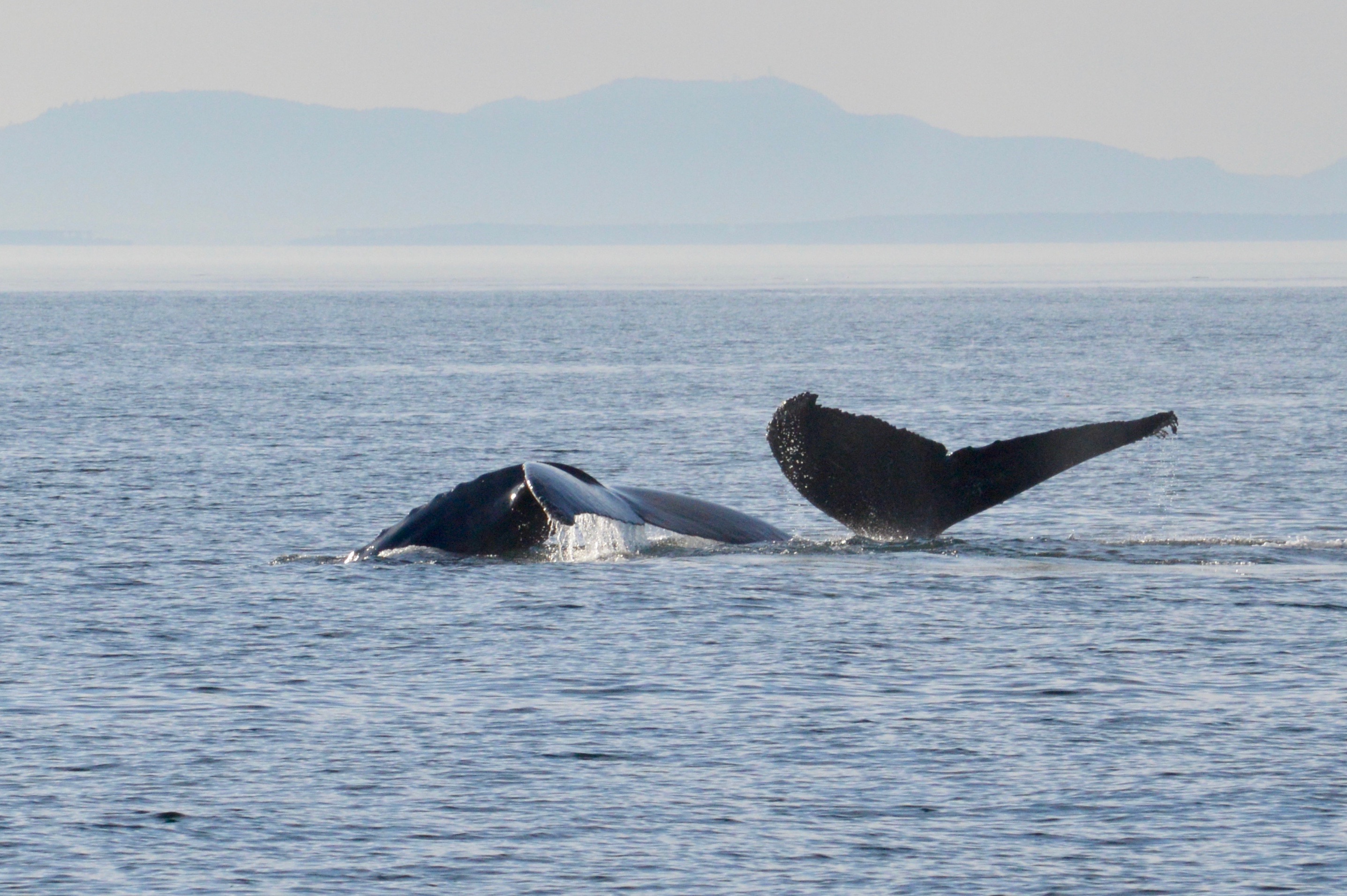M/V Kestrel is our newest and fastest boat. Being that it so fast, and open air, you must wear exposure suits onboard while underway. They’re incredibly warm, and basically just keep the wind out. It wasn’t long after we the dock that we got suited up, and realized that Captain Brian forgot his exposure pants. Instead of going back, he decided to brave the cold. So while the rest of us were nice and cozy, he shivered.
On a lighter note, we got a great look at some Stellar sea lions at Whale Rocks, both swimming and hauled out. From there, we continued west to look for minke whales, and saw a huge number of Phalaropes, tiny seabirds along the way. After getting a few looks at a stealthy minke, we got a report of two humpbacks southeast of Victoria. Being that M/V Kestrel is so fast, we had plenty of time to get out that way before we had to head back in. We were able to sit with them for quite some time. The sun was shining, the water was glassy, and with very few boats on scene, it was incredibly quiet, with just the loud breaths of humpback whales surfacing.
On the way home, we saw even saw Dall’s porpoise which are quite rare! Including the harbor porpoises from earlier in the trip, that brought our trip cetacean count to 4!! What do I mean by cetacean?
Cetacean is the taxonomic order that includes whales, dolphins, and porpoises. It is broken down in to two suborders. These are the mystecetes, which are baleen whales, and the odontocetes, which are toothed whales. That means on today’s trip, we saw two mystecetes (the minke and the humpbacks), and two odontocetes (harbor porpoise and Dall’s porpoise).
On the way back in, we had some warm wind as we rounded Cattle Point, and Brian smiled from ear to ear as his legs warmed up.
Naturalist Alex
M/V Kestrel

